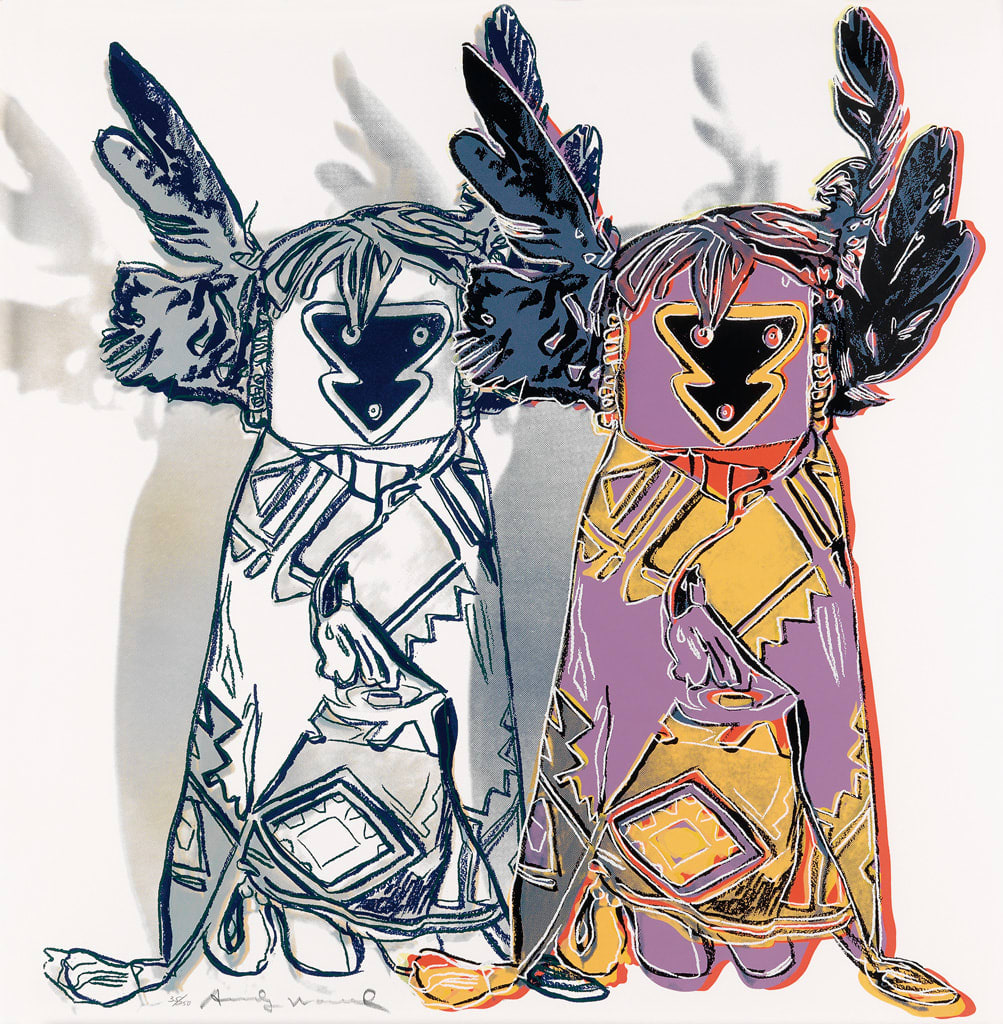-
Obras

Andy Warhol
Kachina Dolls (F & S II.381), 1986Screenprint on Lenox Museum Board.91.4 x 91.4 cm.
36 x 36 in.Edition of 250 (plus proofs)10 numbered in Roman numerals, signed and numbered in pencil. There are 35 TP Signed and numbered in pencil.Portfolio of ten screenprints on Lenox Museum Board. Edition of 250 plus 50 AP (artist proofs), 15 PP (printers proofs), 15 HC (hors commerce), 10 numbered in Roman numerals, signed...Portfolio of ten screenprints on Lenox Museum Board. Edition of 250 plus 50 AP (artist proofs), 15 PP (printers proofs), 15 HC (hors commerce), 10 numbered in Roman numerals, signed and numbered in pencil.
Printed in 1986, Andy Warhol's signed screenprint Kachina Dolls (F. & S. II.381) portrays a Kachina doll—a symbol deeply rooted in Native American culture—on Lenox Museum Board. This print is part of Warhol’s 1986 Cowboys and Indians portfolio, which consists of ten screenprints.
Kachina dolls are sacred artefacts used by certain Native American tribes, particularly in the Southwest, for religious education and rituals. In Warhol’s rendition, the dolls are depicted in his signature Pop Art style, characterised by whimsical use of colour against a stark white background. The print features two Kachina dolls: one in black and white and the other vividly coloured with bright pinks, purples, and oranges. Warhol’s stylized approach emphasises the dolls' decorative elements while straying from their realistic and cultural contexts.
Though Warhol often claimed his work was socially and politically neutral, the Cowboys and Indians series touches on significant historical and cultural tensions. By presenting subjects like Kachina dolls in a manner consistent with media and popular culture portrayals, Warhol highlights the contrast between the mythologized Wild West and historical reality. His work, including Kachina Dolls, reflects the way the American imagination has reshaped history into a more glamorous and simplified version than the actual past.Publications
Frayda Feldman, and Jörg Schellmann. "Andy Warhol Prints: a Catalogue Raisonne 1962-1987." (2003) ii.278.3de 3
Join Our Mailing List
* denotes required fields
We will process the personal data you have supplied to communicate with you in accordance with our Privacy Policy. You can unsubscribe or change your preferences at any time by clicking the link in our emails.
